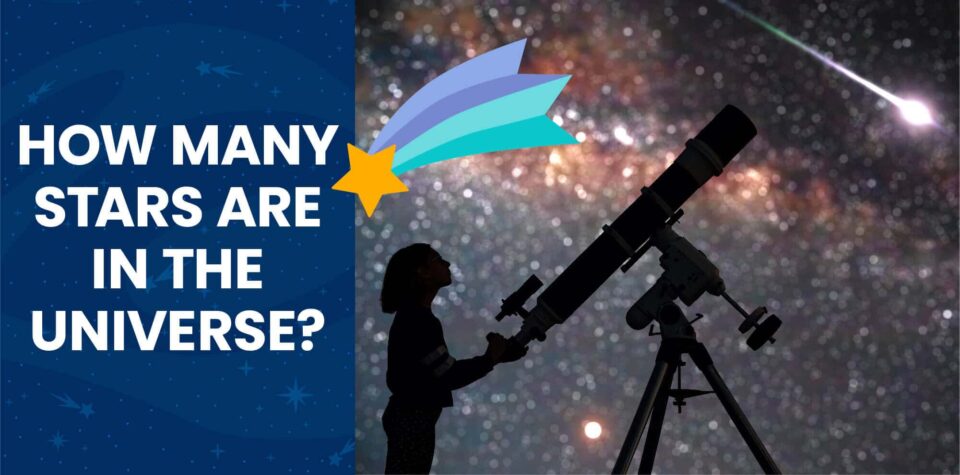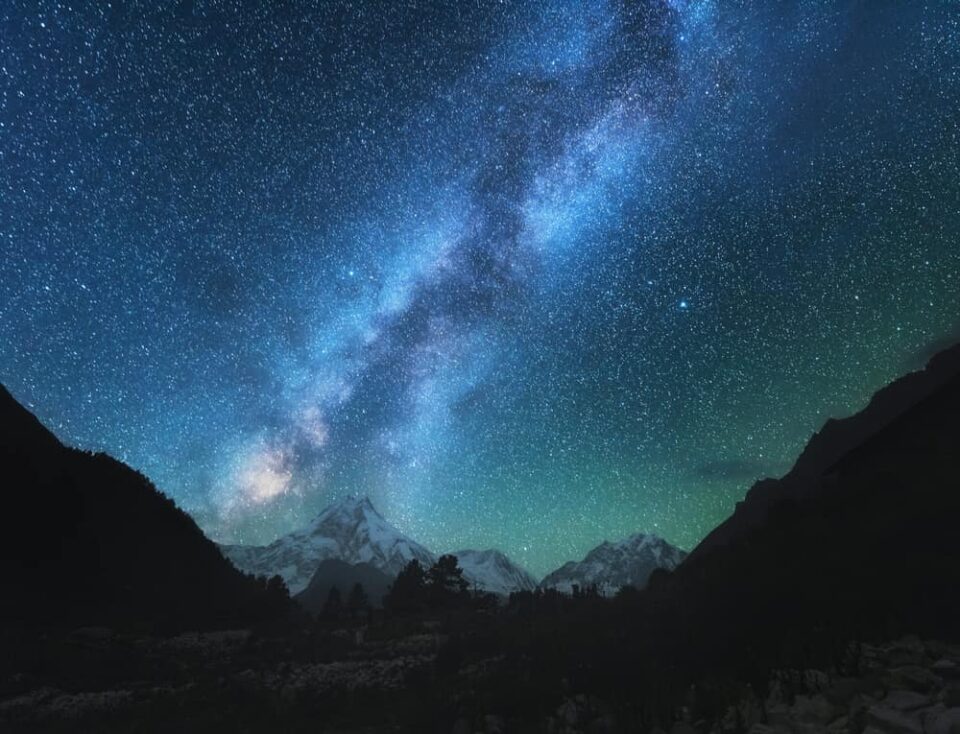
Light Up the Sky: How Many Stars Are in the Universe?
Looking up at the night sky, you might see a dazzling array of stars shining above you. If you’re stargazing with a curious child, you may hear them ask, “How many stars are in the universe?”
The simple answer is that no one knows for sure. Are there stars too far away for us to see? How many pinpricks of light come from stars that no longer exist? How do we even define the limits of the universe? Though we may never be certain, astronomers have figured out a way to estimate how many stars are out there—and their findings suggest there are more stars than we could ever count.
How Do Stars Form?
Before we can talk about the number of stars in the universe, let’s answer a simpler question: What are stars?
A star is a celestial body made of hydrogen and helium gas. It begins its life cycle as a nebula, which is a giant cloud of gas and dust floating between existing stars in space. Nebulae are full of hydrogen gas, and over millions of years, gravity pulls those hydrogen atoms together and condenses them into round balls known as protostars.
Gravity continues to pack the atoms in each protostar closer and closer together, generating so much heat that the hydrogen atoms at its core begin to fuse into helium ions. This fusion brings a star into the main stage of its life. The energy flow at a star’s core produces the energy and heat needed for the star to shine, creating the beautiful lights we see in the night sky.
But don’t be fooled by those little pinpricks of light—stars are much bigger than they appear. The smallest known star in the universe today, OGLE-TR-122b, has a radius of about 103,768 miles (167,000 kilometers). Our Sun is an average-sized star with a radius of around 432,690 miles (695,700 kilometers), and some of the largest stars in our galaxy are up to 1,500 times bigger than the Sun.
But why do all the other stars look so small if our Sun is only average-sized? It’s because a star’s light has to travel a great distance before we’re able to see it with the naked eye here on Earth. The farther away a star is, the smaller it appears. The Sun is the closest star to Earth at approximately 93 million miles (150 million kilometers) away. Proxima Centauri is our nearest stellar neighbor at 4.24 light-years away. Light travels about 5.88 trillion miles (9.46 trillion kilometers) per year, so Proxima Centauri is almost 25 trillion miles away!

How Many Stars Are in the Universe?
If you were to look outside on a clear night, you could see as many as 6,000 stars over your head. That seems like a lot, but it’s just a tiny fraction of the total number of stars in outer space. According to astronomers, there are approximately 200 billion trillion stars in our observable universe.
How do we get to that massive number? We begin by looking at our galaxy, the Milky Way. This galaxy is home to our solar system and loads of cosmic dust, asteroids, and stars. NASA scientists report that there are 100 billion stars in the Milky Way alone.
We also need to consider how many galaxies are in the universe. Astronomers estimate that around two trillion galaxies exist in the observable universe. If we estimate that every galaxy has about as many stars as our Milky Way, we end up with a total estimate of 200 billion trillion stars. And, of course, it’s important to remember that we aren’t able to even detect most of the matter in the universe. So there may be many more stars out there—more than there are grains of sand on Earth!
Kids Will Be Starstruck by These Galactic Facts
Our universe has fascinated people for centuries. The ancient Assyro-Babylonians tracked the stars’ movements around 1000 BCE, and Galileo Galilei discovered the Milky Way was made of millions of stars in 1610. We’re still making incredible discoveries about outer space—including these fun facts about stars for kids.
- Stars and star clusters are often considered the building blocks of galaxies. This is because the gravitational attraction between stars helps hold a galaxy together. Additionally, research suggests that stars may be the building blocks for other things in the universe, as astronomers found that dying stars disperse elements like carbon, oxygen, and nitrogen—all of which are vital for life.
- The most common type of star is called a “red dwarf,” and red dwarfs make up about 73 percent of all the stars in the universe. Red dwarfs vary in size but often have around 7–50 percent less mass than our Sun. They also generate less heat than the Sun, reaching around 6,380°F (3,527°C). The Sun’s temperature, for reference, is about 9,900°F (5,482°C).
- What’s the opposite of a dwarf star? A hypergiant! That’s what scientists call the largest stars in the universe. Hypergiants are extremely rare (there are only about 12 in the Milky Way), but the ones in our universe are big enough to make a statement. The largest hypergiant ever observed, called UY Scuti, is 1,700 times larger than the Sun.
- The Sun is the closest star to Earth and is 4.3 billion years old. It’s classified as a yellow dwarf star, and it’s one of the bigger ones. Yellow dwarfs range from 9,600°F (5,327°C) to 10,340°F (5,726°C) in temperature and live for around 10 billion years.
- Even though many of us grew up singing “Twinkle, Twinkle, Little Star,” stars don’t actually twinkle—they just look like they do. That’s because as starlight travels from space through our atmosphere, it “bends” and changes direction based on the density of the air it passes through. This light refraction is what gives stars their twinkly appearance.

